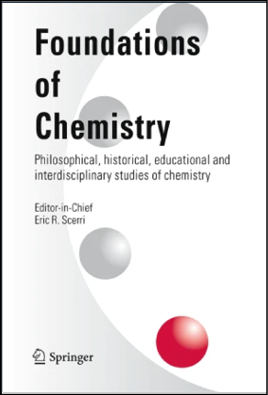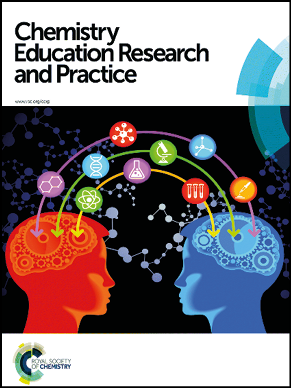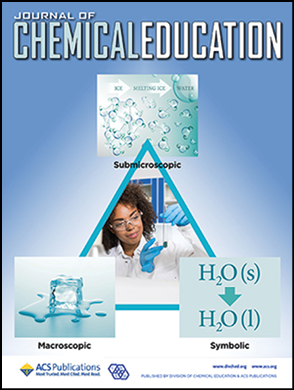
Dalla letteratura internazionale:
qualche spunto interessante (open access)
Elena Ghibaudi
Dipartimento di Chimica dell’Università di Torino
e-mail: elena.ghibaudi@unito.it
“Sharp of taste”: the concept of acidity in the Greek system of natural explanation
Apostolos K. Gerontas
Found. Chem. (2023)
(https://doi.org/10.1007/s10698-023-09483-w)

Abstract.Acidic substances were known for thousands of years, and their macroscopic-sensory characteristics were reflected by words in most ancient languages. In the Western canon, the history of the concept of acidity goes back to Ancient Greece. In Greek, the word associated with acidity from its early literary references was ὀξύς (“sharp”), and still in contemporary Greek the words “sour” and “acidic” have the same root. This paper makes a short presentation of the appearance of the abstract concept in the works of Plato and Aristotle and relates it, on one side to the already existing theological-philosophical tradition, starting with Hesiod´s Theogony and on the other, to the then available to the Greeks organoleptic experiences of sourness-vinegar and sour milk.
Keywords: acidity; theogony; Greek philosophy; early history of alchemy; Hesiod; Plato; Aristotle; history of vinegar and dairy products
The poetry of the universe, the periodic table, and the scientific progress: a review of new studies on the periodic table of the elements
Klaus F. Gärditz
Found. Chem., 2023, 25, 269–283
(https://doi.org/10.1007/s10698-023-09468-9)

Abstract. In 1869, two distinguished scientists, Dimitri Mendeleev and Lothar Meyer, discovered a certain periodicity among the chemical characteristics of the then known elements. Both developed first versions of the periodic table, independently. In the wake of the 150th anniversary, UNESCO proclaimed 2019 the “International Year of the Periodic Table of Chemical Elements”. Two lucid and detailed studies on the periodic table—accompanied by smaller studies on the occasion of the anniversary—have been published, recently, one of them analysing the scientific history, contributing to the (philosophical) theory of science (Eric Scerri), the other analysing the structures, patterns, and irregularities of the table (Geoff Rayner-Canham). Both studies are profound and vivid examples how scientific progress works. They illustrate that even in hard sciences—mirroring Merton’s concept of middle range theory—the required degree of exactness can remain on an intermediate level, as imperfection allows interpretations which could not (yet) be reached by pure mathematics and logic. Both of these brilliant studies provide valuable material, especially for a social science, to better understand how scientific ideas develop, how the power of visualization helps shape ideas, and how contingency is absorbed by the scientific process.
Keywords: Periodic Table; theory of science; freedom of science; history of science
10 Guiding principles for learning in the laboratory
Michael K. Seery, Hendra Y. Agustian, Frederick V. Christiansen,
Bente Gammelgaard, Rie H. Malm
Chem. Educ. Res. Pract., 2024, 25, 383-402
(https://pubs.rsc.org/en/content/articlelanding/2024/rp/d3rp00245d)

Abstract. Laboratory work in chemistry has been extensively researched in the last decade but the gap between research and practice is still broad. This Perspective shares 10 guiding principles relating to university laboratory education, drawing on research over the last decade. Written with an audience of practitioners in mind, the Perspective aligns with Hounsell and Hounsell’s congruence framework, so that the 10 principles consider all aspects of the laboratory curriculum: design, teaching approaches, and assessment approaches as suggested by Biggs, but additional contextual factors relating to teaching context: backgrounds of students and their support, and overall laboratory organisation and management. After discussing the rationale for each guiding principle, examples of approaches are given from recent literature along with prompts to help enact the guiding principle in practice.
Making sense of chemical equilibrium: productive teacher–student dialogues as a balancing act between sensemaking and managing tension
Ylva Hamnell-Pamment
Chem. Educ. Res. Pract., 2024, 25, 171-192
(https://pubs.rsc.org/en/content/articlelanding/2024/rp/d3rp00249g)

Abstract. Navigating the observational, symbolic, and theoretical knowledge domains of chemistry is crucial for chemistry sensemaking. However, this has been shown to be particularly challenging for students of chemistry. In order to reach government standards for sensemaking in the chemistry subject, it is important to investigate how chemistry teachers can sustain sensemaking practices in their classrooms. In this study, conversation analysis was used to study videotaped teacher–student dialogues at upper secondary school practical lessons in chemical equilibrium. Common patterns in how sensemaking was produced in interaction were found in four experienced chemistry teachers’ sensemaking dialogues with students. The data show how the teachers use coordinated actions in conversations to create a balance between (1) managing sensemaking dialogues in the laboratory classroom on a moment-to-moment basis through connecting theory and experience, and (2) managing the tension between exposing students’ knowledge gaps and presenting the students as competent as part of the interaction. The results of the study indicate that resolving tension in interaction is an important part of teacher–student sensemaking in chemistry, and also identify the chemical equation as a possible tool for sensemaking progression. The detailed examples of teacher–student sensemaking can be used as models for chemistry teachers interested in how sensemaking can be achieved practically.
Hands-On Activity Illustrating the Sorting Process of Recycled Waste and Its Role in Promoting Sustainable Solutions
Ronard Herrera Monegro, Savannah R. Graham, Jaiah Steele,
Megan L. Robertson, Jerrod A. Henderson
J. Chem. Educ., 2024 (asap)
(https://pubs.acs.org/doi/10.1021/acs.jchemed.3c01128)

Abstract. Effective recycling is not merely a matter of collecting waste; it also requires meticulous categorization to maximize the potential for reusing material and minimizing waste sent to landfills. Education and awareness of the sorting and recycling process bottlenecks need to be emphasized and extended beyond higher educational contexts (e.g., in multiple stages of educational pathways, such as middle or high school). Hence, this project introduces a hands-on plastic sorting activity where students use recycled waste to be sorted based on their physical properties. Several tools were provided to perform the separation, such as water, sieves, magnets, and manual/visual separation while considering the time and cost associated with each tool. The activity was evaluated by pre- and post-evaluations based on Likert-scale and open-ended questions grouped in several categories related to the sorting process. In several categories, we observed that the activity enhanced student knowledge (e.g., general sorting understanding), while in other categories, there was no growth. From open-ended questions, students expressed an understanding of how to sort recycled waste and an appreciation for the trade-offs in developing sorting solutions. This activity effectively enhanced students’ awareness of the sorting process of recycled waste. It lays the foundation for future inquiry and outreach project design.
Keywords: plastic sorting; recycling; K-12 activity
Teaching with Augmented Reality Using Tablets, Both as a Tool and an Object of Learning
Sabrina Syskowski, Chantal Lathwesen, Canan Kanbur, Antje Siol, Ingo Eilks, Johannes Huwer
J. Chem. Educ., 2024, 101, 3, 892–902
(https://pubs.acs.org/doi/10.1021/acs.jchemed.3c00607)

Abstract. In this paper, we present a novel approach to utilizing tablets in chemistry education. In the context of education for sustainable development, we utilize tablets as objects of learning to address the lithium-ion battery. In addition, we used tablets as learning tools by making use of augmented reality technology. This way, we have created an innovative digital learning scenario that corresponds to a 3-h laboratory. Evaluation took place during the implementation of nonformal student laboratories. Results show positive effects in interest to working with tablets as a tool and an object of learning.
Keywords: high school; laboratory instruction; inquiry-based/discovery learning; multimedia-based learning; education for sustainable development; system thinking; electrochemistry